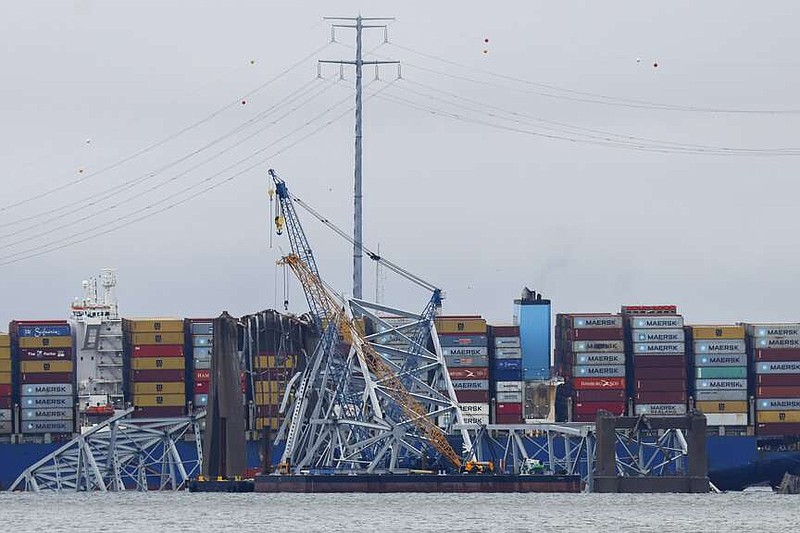BALTIMORE -- Crews opened a second temporary channel on Tuesday allowing a limited amount of marine traffic to bypass the mangled wreckage of Baltimore's collapsed Francis Scott Key Bridge, which had blocked the vital port's main shipping channel since its destruction one week ago.
Work is ongoing to open a third channel that will allow larger vessels to pass through the bottleneck and restore more commercial activity, officials announced at a news conference Tuesday afternoon. The channels are open primarily to vessels involved in the cleanup effort, along with some barges and tugs that have been stuck in the Port of Baltimore.
A tugboat pushing a fuel barge was the first vessel to use an alternate channel late Monday. It was supplying jet fuel to Delaware's Dover Air Force Base.
Gov. Wes Moore said rough weather over the past two days has made the challenging salvage effort even more daunting. Conditions have been unsafe for divers trying to recover the bodies of the four construction workers believed trapped underwater in the wreckage.
"We promised these families that we would do everything in our power to bring them closure, but also my directive is to complete this mission with no injuries and no casualties," Moore said.
Earlier Tuesday, Moore visited one of two centers the Small Business Administration opened to help companies get loans to assist them with losses caused by the disruption caused by the collapse.
U.S. Sen. Ben Cardin, a Democrat who accompanied Moore in meetings with potential loan applicants, said he spoke with truck drivers who relied on the port to supply their cargo. While they are already feeling the immediate economic effects of the collapse, he said, the ripple effects will be widespread -- especially for small businesses, which he called "the growth engine of our nation."
For Alex Del Sordo, who owns a marina and waterside restaurant near the collapse site, the future economic landscape is largely a mystery. So far, his businesses have been busy servicing boats involved in the recovery and salvage operation and offering discounted meals for first responders. He said he and his partner are considering applying for a low-interest loan.
He anticipates a decrease in pleasure boating because vessels moored in Baltimore's harbor are temporarily trapped there. But he said rebuilding the Key Bridge will likely bring a large influx of labor and maritime traffic into the area and help keep some local businesses afloat.
"I think small businesses will have to be creative in what they offer," he said.
In Annapolis, lawmakers held a hearing Tuesday afternoon for a bill authorizing use of the state's rainy day fund to help port employees who are out of work and aren't covered under unemployment insurance while the port is closed or partially closed. The bill also would let the governor use state reserves to help some small businesses avoid laying people off and to encourage companies that relocate to other ports to return to Baltimore when it reopens.
Lawmakers are working to pass the bill quickly in the last week of their legislative session, which ends Monday. The Maryland Senate Finance Committee voted 11-0 in favor Tuesday; it could be on the Senate floor as soon as today.
Other vessels are also stuck in Baltimore's harbor until shipping traffic can resume through the port, which is one of the largest on the East Coast and a symbol of the city's maritime culture. It handles more cars and farm equipment than any other U.S. port.
Jim Roof, a longtime tugboat captain, said he's waiting for a deeper channel to open before he can leave the harbor. He shook his head, thinking about the thousands of ships that have passed under the Key Bridge during his career.
"The system we have is pretty good," he said, noting that in this case, the absolute worst possible timing caused a large-scale disaster.
The local nonprofit Baltimore International Seafarers' Center has been in contact with the crews of some stationary ships, offering them support and transportation for shopping trips and other excursions.
Volunteer Rich Roca said seafaring is a tough job even in the best of times. Crew members often leave their homes and families for months on end. Some of those stuck in Baltimore are halfway around the world with no return in sight.
Information for this article was contributed by Brian Witte, Tassanee Vegpongsa, Sarah Brumfield, Michael Kunzelman and Rebecca Boone of The Associated Press.
